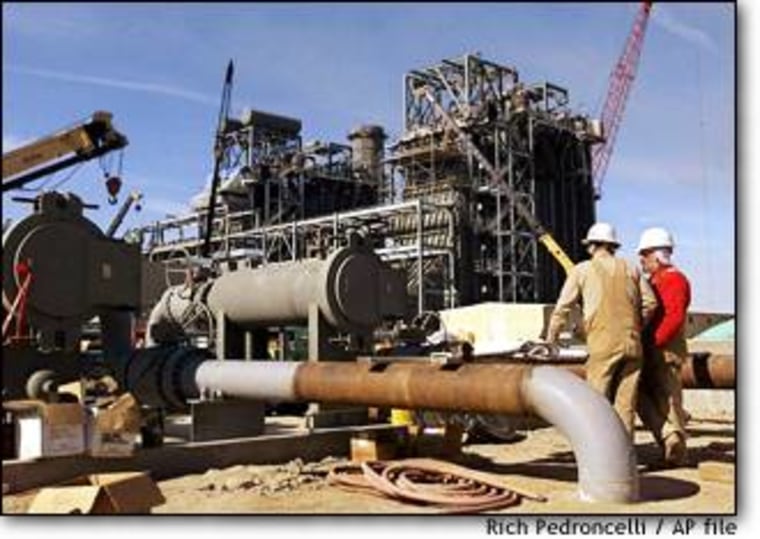With the U.S.-led war in Iraq now over, world oil prices have stabilized somewhat, but the price of natural gas remains stubbornly high, leading some on Wall Street to wonder if it poses a serious threat to the sustainability of an economic recovery.
The thinking among traders is that if the U.S. industrial sector recovers, pushing up demand for energy, the price of natural gas could spike to record highs come winter and pose a serious threat to a nascent economic recovery. It wouldn’t help, either, if this summer turns out to be a hot one, further increasing energy demand at a time when supplies are tight.
The issue was raised by Federal Reserve Chairman Alan Greenspan during his testimony before the Congressional Joint Economic Committee on May 21. Greenspan told lawmakers that dwindling supplies of natural gas were a “very serious problem” that may put pressure on the U.S. economy.
Industry analysts, government officials and traders share the Fed chief’s concerns. Fears were heightened by a report Monday from the Institute for Supply Management, that indicated the downturn in the U.S. manufacturing sector is easing. The potential for an increase in demand from the sector drove crude oil futures to a six-week high on the New York Mercantile Exchange.
Natural gas prices soaring
Natural gas prices are soaring too, as U.S. supplies sit near record lows, down 39 percent from last year’s levels and 32 percent below the five-year industry average, according to Jim Williams, an analyst with WTRG Economics, a consulting group for the energy industry.
Reasons for the tight supply include a cold winter and spring in the Northeastern United States, a primary natural-gas consuming region, and declines in U.S. production levels.
Futures prices for natural gas on the New York Mercantile Exchange are floating above $6 per 10,000 million British thermal units (MMBTU), more than twice the average price of the last five years, according to Williams.
“It’s still touch-and-go as to whether there will be sufficient drilling for next winter — that’s why there’s so much uncertainty in the price of natural gas,” said Williams. “My hunch is we’ll make it,” he added, “but two, three or four years on — that’s another question.”
Phil Flynn, energy analyst at Alaron Trading, worries that a hot summer may drain natural gas supplies, as power plants ramp up to power air conditioners, and push natural gas prices higher. With the U.S. economy already struggling to mount a recovery, a sustained rise in natural gas prices could make matters more difficult, he said.
“High natural gas prices can hurt the consumer and manufacturing, which is trying to get itself on its feet,” Flynn said, but added that the impact may be somewhat diminished by the Bush Administration’s $350 billion tax cut, a declining dollar and an absence of inflationary pressures in the U.S. economy. “We’re in better position to absorb the shock,” he said.
Another silver lining: companies in the natural gas sector are likely to profit from the growth in demand for natural gas. “Everyone’s waking up to the fact that this could be a real crisis and realizing it could be profitable for the entire sector,” he said.
Some unlikely victims
But while energy producers may reap the windfalls of rising prices, most sectors of the economy are likely to suffer. Energy derived from natural gas accounts for 24 percent of total energy consumed in the United States, according to the Energy Information Administration.
High energy costs hurt companies involved in manufacturing and heavy industry the most, as those sectors tend to guzzle large amounts of energy as they produce products like aluminum and chemicals, according to Williams. Companies in the services sector will also be hurt by higher energy costs.
There may already be some unlikely victims. Natural gas is used to produce fertilizer, and so manufacturers of agricultural products are likely to pass on the higher production cost to farmers, according to Williams.
“You might find that farmers won’t be buying that new tractor until next year because they need money to buy fertilizer,” Williams said.
